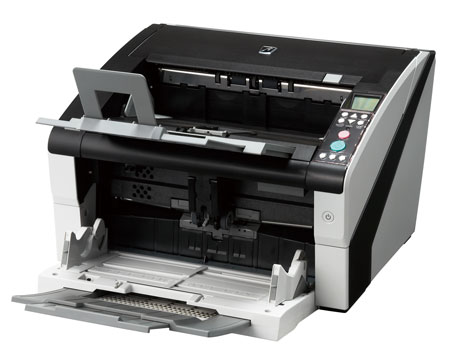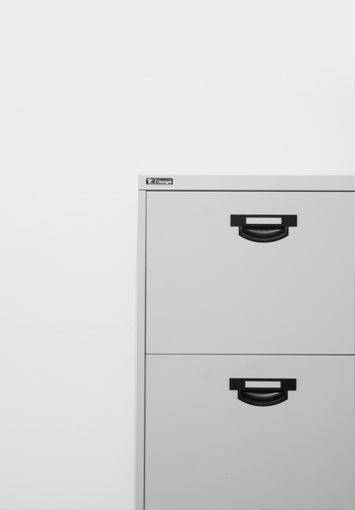For over a century, businesses have relied on paper as the primary method of recording, storing, and sharing information. It’s trusted, familiar, and comfortable.
However, storing records on paper comes with its own set of challenges. It’s costly to store, inefficient to manage, and becomes increasingly harder to organize as the volume grows.
Businesses who continue to rely on paper recordkeeping alone face significant operational roadblocks. Accessing information is slow and expensive, and valuable insights may go unnoticed, buried under endless stacks of paper.
That’s why transitioning to an electronic record-keeping system should be a priority for every business.
But getting rid of paper for good isn’t as simple as it sounds. Scanning, organizing, and tagging those documents is both time-consuming and labor-intensive. Without proper planning, equipment, and expertise, the results may fall short of your expectations.
In short, taking on the task alone can be risky, and the rewards might not justify the effort.
Thankfully, there’s a better solution.
Outsourcing your document conversion needs is the easiest and most cost-effective way to digitize large volumes of paper records quickly without putting a huge strain on your business. The benefits are clear: expertise and security.
Professional scanning companies bring years of experience and use state-of-the-art equipment and software to help businesses avoid the common pitfalls of trying to handle it themselves.
Plus, they operate with security in mind, following strict protocols to protect the confidentiality and privacy of your data.
Many businesses have questions about how to start, how to keep things running smoothly during the conversion process, and how to prevent paper from piling up again in the future.
Whether you need to scan a few thousand documents or tackle a backlog of millions, our professional document conversion service is the easiest way to modernize your record-keeping system.
The Benefits of Outsourcing The Document Conversion Process to a Third Party Provider
The goal of any document conversion service is to help businesses build a faster, more efficient way of storing, searching for, and retrieving information.
No matter what industry you are in, the benefits of going paperless are endless. Moving away from inefficient paper processes provides an immediate boost in productivity. It also helps you enhance the security of your records. Other advantages of a document conversion service include:
- Immediate Access: Locating your files is near-instantaneous, eliminating wasted time thumbing through stacks of paper to find what you’re looking for. Conduct keyword searches against specific index fields to quickly locate your records.
- Better Organization: Key identifiers on your documents, including invoice numbers, client ids, dates, or pretty much anything else you can think of can be converted to searchable metadata via OCR or manual data entry, helping you categorize your documents more effectively.
- Cost Savings: The physical footprint of on-site paper storage makes it an expensive way to store your documents. By digitizing your records, you can store thousands of files for pennies per dollar compared to commercial office space charged per square foot.
- Improved Collaboration: Paper files can only be in one person’s hands at a time. With digital files, multiple people can work with the same document simultaneously.
- Disaster Prevention: Paper records are prone to damage, loss, and theft. Digital files can be secured by encryption and backed up to multiple locations, making a complete data loss virtually impossible.
- Reclaim Space: Reclaim office space for more important tasks by reducing your paper storage requirements.
How do Document Conversion Services Work?
Transforming a wall of filings cabinets into a cloud based document management system might seem like magic, but in reality, the process is quite simple. From paper to paperless, the entire process can be broken down into 4 simple steps:
Step 1. Preparation
The first step to any document conversion project is preparation. When converting a large number of documents, you’re going to need to prioritize and organize.
You can start by grouping your files by type and level of sensitivity, and be as detailed as you can. Even if identifying and organizing by the box full is the best that you can do, it’s better than nothing.
Remember that the more organized you are upfront, the more streamlined the process will be. It’s much easier to make plans before the scanning starts, rather than trying to course-correct mid-project.
Deciding which documents you will need to access throughout the conversion process, and which you can do without temporarily is another important part of this process.
Depending on the number of files you need to digitize, converting and indexing your documents can take anywhere from a few days to a few weeks. You’ll want to be sure you can conduct normal business operations while the process takes place.
You’ll also want to digitize the most frequently accessed data first if possible, so that you get the greatest benefits upfront. Then you can move on to archived data that you may not need immediate access to.
Step 2. Scanning
Next up is the scanning process. Some companies may refer to this as document imaging, document digitization, or document conversion, but these are just different names for the same process.
After you hand off your documents to the scanning team, they will inspect each document to ensure that it’s ready to pass through the scanning equipment. That includes removing staples, paperclips, or creases that could interfere with producing a quality scan and setting aside any potentially problematic documents. SecureScan will handle this process for you, but not every scanning company will, so it is wise to ask first to avoid any unpleasant surprises later.
Scanning technicians will then develop a scanning pipeline/process depending on your needs, In some cases, they may even create custom scanning protocols to make the process more efficient, like defining a template for data capture on a large number of documents with a similar layout. This makes the indexing step faster and more accurate.
Your documents are then fed into professional-grade, high-speed scanning equipment. These are not your average consumer scanners, these are designed to process 150 sheets per minute or more, outputting high resolution 300 dpi image files. In most cases, these files are saved as .pdf or .tif image files to be used with any document management software.

Step 3. Indexing
When you have thousands of documents you need to convert, the process can get pretty overwhelming, pretty quickly. Simply passing a bunch of documents into a scanner won’t get you far, you need to create a system of categorizing and storing your documents in an organized way, so that you can easily locate and retrieve the information contained in those documents when you need it.
Document indexing is the process of identifying the specific pieces of information contained in a set of documents that will later be used to create an index, allowing you to search for them.
Imagine that you have a large batch of invoices that you would like to digitize. You probably already know how to organize them in a way that makes it easy to find what you are looking for: by invoice number or client name for example.
In fact, it’s likely that you would have already done this with your paper documents. Each filing cabinet in your office may hold the invoices from a specific year, and in that year, folders group documents by last name, dividing those documents into a logical group.
The index created during the conversion process works in the same way. Each important identifier can be used to create the digital equivalent to a “table of contents” that maps the data to a corresponding file.
This data is known as metadata, data associated with a file that provides information about its contents. By adding this metadata, you can easily locate a single invoice by searching for those specific pieces of information.
Its incredibly important to ensure that this metadata is accurate, after all, the index is the most valuable part of your digital archive. Without it, you would be unable to locate a specific piece of information without looking at every single file.
At SecureScan, we leverage double key indexing, a verification method in which every automated scan is manually reviewed by a human operator for errors or inconsistencies. This ensures the document conversion process results in an archive that expedites accurate retrieval of any document.
Step 4. Disposal
Now that your files are scanned, indexed, and uploaded to a document management system, chances are you’re never going back to paper. So what then should you do with your old documents after they’ve been converted?
If you need to hang on to your original paper files, you can look into long term document storage solutions. Many companies offer services centered around storing paper documents en masse, and that can be a great option to help you meet retention requirements for your documents. Plus, storage is relatively inexpensive, usually at the cost of accessibility.
Another option is a one time shredding service. Most scanning companies also offer secure shredding services to make it easier to get rid of your documents after they have been scanned. Of course, you could simply throw your files out in the trash, but that exposes any private information on those files to risk of theft.
The major benefit of a professional shredding service is that your data is destroyed in compliance with data privacy protection laws, making it easy for your business to meet strict privacy compliance.
What’s next?
If you’re ready to solve your paper problems once and for all, we can help. SecureScan has been a leading provider of secure document conversion services to businesses throughout the Northeast for over 22 years and counting. We provide custom scanning solutions and top rated customer service to help you transform the way you manage your records. Contact us today for a free quote.
